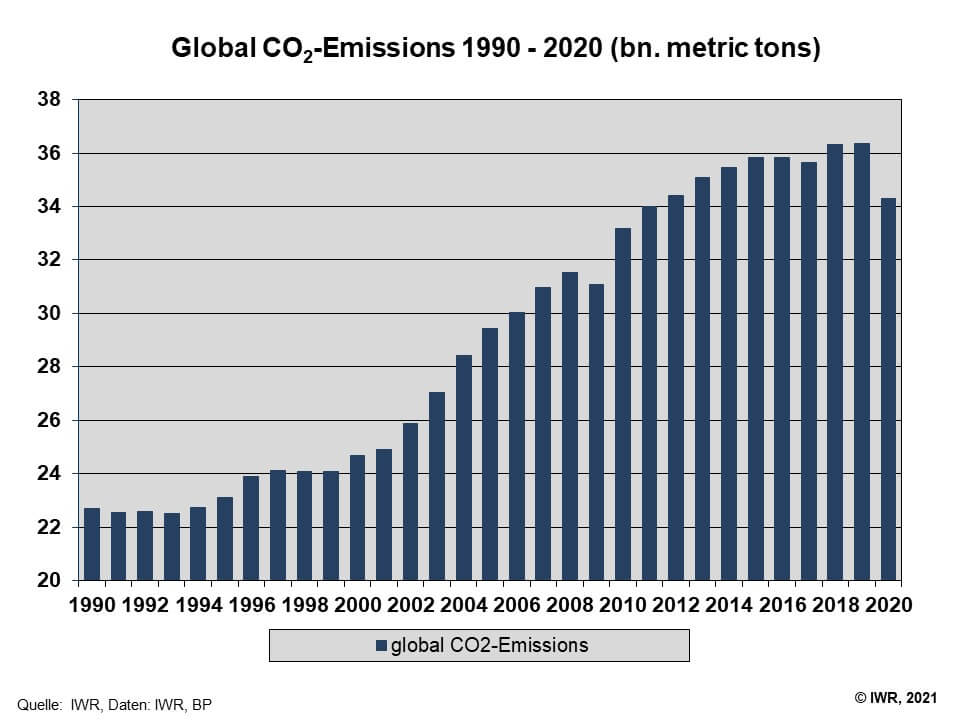CERINA Plan as an alternative for Kyoto
When it comes to climate protection, the international community has been arguing for many years about the right approach. Despite all efforts and UN climate conferences, the annual emission of CO2 has latterly risen to nearly 36 billion tonnes (2016). That is about 58 per cent above the figure for 1990 (22.6 billion tonnes), the base value for the Kyoto Protocol. In short – the Kyoto model, involving a contractual agreement on maximum CO2 emissions, does not work.

A modification of the Kyoto limitation approach, involving negotiation of maximum CO2 limits, has recently developed in the shape of discussion on emission budgets. The principle: if you want to reduce global warming to 1.5 or 2 degrees, only a limited amount of greenhouse gases can be emitted. In its core, this model is merely a modification of the Kyoto limitation approach. The difference: countries can be more flexible in their timeline, can overdraw their budget or carry it forward now, leaving the consequences to the next generation to sort out.
CERINA plan focuses on investments
The basic idea of the CERINA plan (CO2 Emissions and Renewable Investment Action Plan) has emerged as a consequence of the failed UN climate conference in Copenhagen in 2009 and is based on investment. Unlike limitation schemes, league tables of investments take a positive approach; this can be seen, for example, in the national league tables of gross domestic product (GDP). In the debate on investment, the focus is on innovation, growth and employment.
In fact the international community at the UN Climate Change Conference in Paris 2015 heralded a paradigm shift with the introduction of country-specific measures for climate protection. Unlike Paris the CERINA plan goes one step further however, as it formulates concrete quantitative investment contributions for each country, which are necessary for a stop or the reduction of global CO2 increase.















